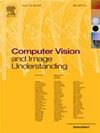EUN:用于隐私保护的增强不可学习示例生成方法
IF 3.5
3区 计算机科学
Q2 COMPUTER SCIENCE, ARTIFICIAL INTELLIGENCE
引用次数: 0
摘要
在人工智能时代,保护用户隐私的重要性日益凸显。不可学习的例子阻止深度学习模型通过添加人眼无法察觉的扰动或噪声来学习图像中的语义特征。现有的摄动生成方法对防御方法的鲁棒性较差或仅对一种防御方法具有鲁棒性。为了解决这个问题,我们提出了一种针对不可学习示例的增强摄动生成方法。该方法通过对图像执行逐类卷积并在图像的局部位置更改一个像素来生成扰动。该方法对多种防御方法具有较强的鲁棒性。此外,通过调整图像的全局位置卷积和局部位置像素变化的顺序,生成并分析了该方法的变体。我们在多种数据集和多种模型上测试了我们的方法,并与6种微扰生成方法进行了比较。结果表明,在面对图像快捷压缩、对抗训练、对抗增强等防御方法时,增强摄动生成方法对不可学习样例的净测试准确率仍低于35%。它在许多方面都优于现有的微扰生成方法,在几个参数设置下,比CUDA和OPS两种优秀的微扰生成方法低20%。本文章由计算机程序翻译,如有差异,请以英文原文为准。
EUN: Enhanced unlearnable examples generation approach for privacy protection
In the era of artificial intelligence, the importance of protecting user privacy has become increasingly prominent. Unlearnable examples prevent deep learning models from learning semantic features in images by adding perturbations or noise that are imperceptible to the human eye. Existing perturbation generation methods are not robust to defense methods or are only robust to one defense method. To address this problem, we propose an enhanced perturbation generation method for unlearnable examples. This method generates the perturbation by performing a class-wise convolution on the image and changing a pixel in the local position of the image. This method is robust to multiple defense methods. In addition, by adjusting the order of global position convolution and local position pixel change of the image, variants of the method were generated and analyzed. We have tested our method on a variety of datasets with a variety of models, and compared with 6 perturbation generation methods. The results demonstrate that the clean test accuracy of the enhanced perturbation generation method for unlearnable examples is still less than 35% when facing defense methods such as image shortcut squeezing, adversarial training, and adversarial augmentation. It outperforms existing perturbation generation methods in many aspects, and is 20% lower than CUDA and OPS, two excellent perturbation generation methods, under several parameter settings.
求助全文
通过发布文献求助,成功后即可免费获取论文全文。
去求助
来源期刊

Computer Vision and Image Understanding
工程技术-工程:电子与电气
CiteScore
7.80
自引率
4.40%
发文量
112
审稿时长
79 days
期刊介绍:
The central focus of this journal is the computer analysis of pictorial information. Computer Vision and Image Understanding publishes papers covering all aspects of image analysis from the low-level, iconic processes of early vision to the high-level, symbolic processes of recognition and interpretation. A wide range of topics in the image understanding area is covered, including papers offering insights that differ from predominant views.
Research Areas Include:
• Theory
• Early vision
• Data structures and representations
• Shape
• Range
• Motion
• Matching and recognition
• Architecture and languages
• Vision systems
 求助内容:
求助内容: 应助结果提醒方式:
应助结果提醒方式:


